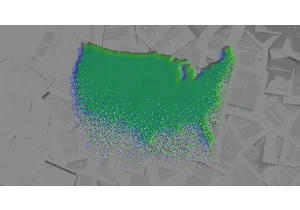Want more stories from Lance Lambert’s ResiClub in your inbox? Subscribe to the daily free ResiClub newsletter.
During the pandemic housing boom, which spanned from summer 2020 to spring 2022, institutional homebuying accelerated due to a perfect storm of soaring rents, low interest rates, easy access to capital, and spiking home prices that proved too enticing to resist. However, that institutional frenzy quickly fizzled out once interest rates spiked.
The big question moving forward is, if interest rates fall meaningfully, by how much will institutional single-family homebuying pick up?
To better understand which institutional homebuyers are already the most active—and the least active—ResiClub reached out to the residential real estate data pros at Parcl Labs. (Earlier this month, Parcl Labs provided data on which institutional investors are selling the most homes.)
The Parcl Labs data makes it clear that institutional homebuying remains fairly tame right now.
Among these 21 major institutional operators, only one increased its total home portfolio over the past three months by over 2%. That was Tiber Capital, which acquired 165 single-family homes over the past three months and increased its total home portfolio by 2.3%.
On a total basis, Progress Residential acquired the most, adding 1,140 homes over the past three months.
Institutional homebuying gets exaggerated online
This month, former MMA fighter Jake Shields posted on X/Twitter that 44% of U.S. single-family home purchases this year were made by private equity firms. The article he shared was an obscure post on Medium, which cited a Business Insider article but linked to an article on The Atlantic’s website. Neither of those outlets actually cited the 44% figure, but the tweet got over 600,000 online views.
In aggregate, Parcl Labs calculates institutional operators own around 0.73% of the total U.S. single-family housing stock (less than one in 100 homes), with it reaching as high as 4.4% in the Atlanta-metro market. Despite institutional investors jumping into the housing market following the 2008 housing bust, most landlords are still small operators with between one and 10 homes.
Autentifică-te pentru a adăuga comentarii
Alte posturi din acest grup

I’ve worked at the bleeding edge of robotics innovation in the United States for almost my entire professional life. Never before have I seen another country advance so quickly.
In


Restaurant industry leaders are excited for

Elon Musk’s anger over the One Big Beautiful Bill Act was evident this week a

Welcome to AI Decoded, Fast Company’s weekly new

When artificial intelligence first gained traction in the early 2010s,

You wake up in the morning and, first thing, you open your weather app. You close that pesky ad that opens first and check the forecast. You like your weather app, which shows hourly weather forec
